Chicago Fed: "Index Suggests Economic Growth Moderated In August"
"Index points to a pickup in economic growth in July." This is the headline for this morning's release of the Chicago Fed's National Activity Index, and here is the opening paragraph from the report:
Led by declines in production-related indicators, the Chicago Fed National Activity Index (CFNAI) decreased to a neutral value in August from +0.29 in July. Three of the four broad categories of indicators used to construct the index made positive contributions in August, but three categories deteriorated from July. The index’s three-month moving average, CFNAI-MA3, moved up to +0.01 in August from –0.08 in July. [more]
Background on the CFNAI
The Chicago Fed's National Activity Index (CFNAI) is a monthly indicator designed to gauge overall economic activity and related inflationary pressure. It is a composite of 85 monthly indicators as explained in this background PDF file on the Chicago Fed's website. The index is constructed so a zero value for the index indicates that the national economy is expanding at its historical trend rate of growth. Negative values indicate below-average growth, and positive values indicate above-average growth.
The first chart below shows the recent behavior of the index since 2007. The red dots show the indicator itself, which is quite noisy, together with the 3-month moving average (CFNAI-MA3), which is more useful as an indicator of the actual trend for coincident economic activity.
(Click on image to enlarge)
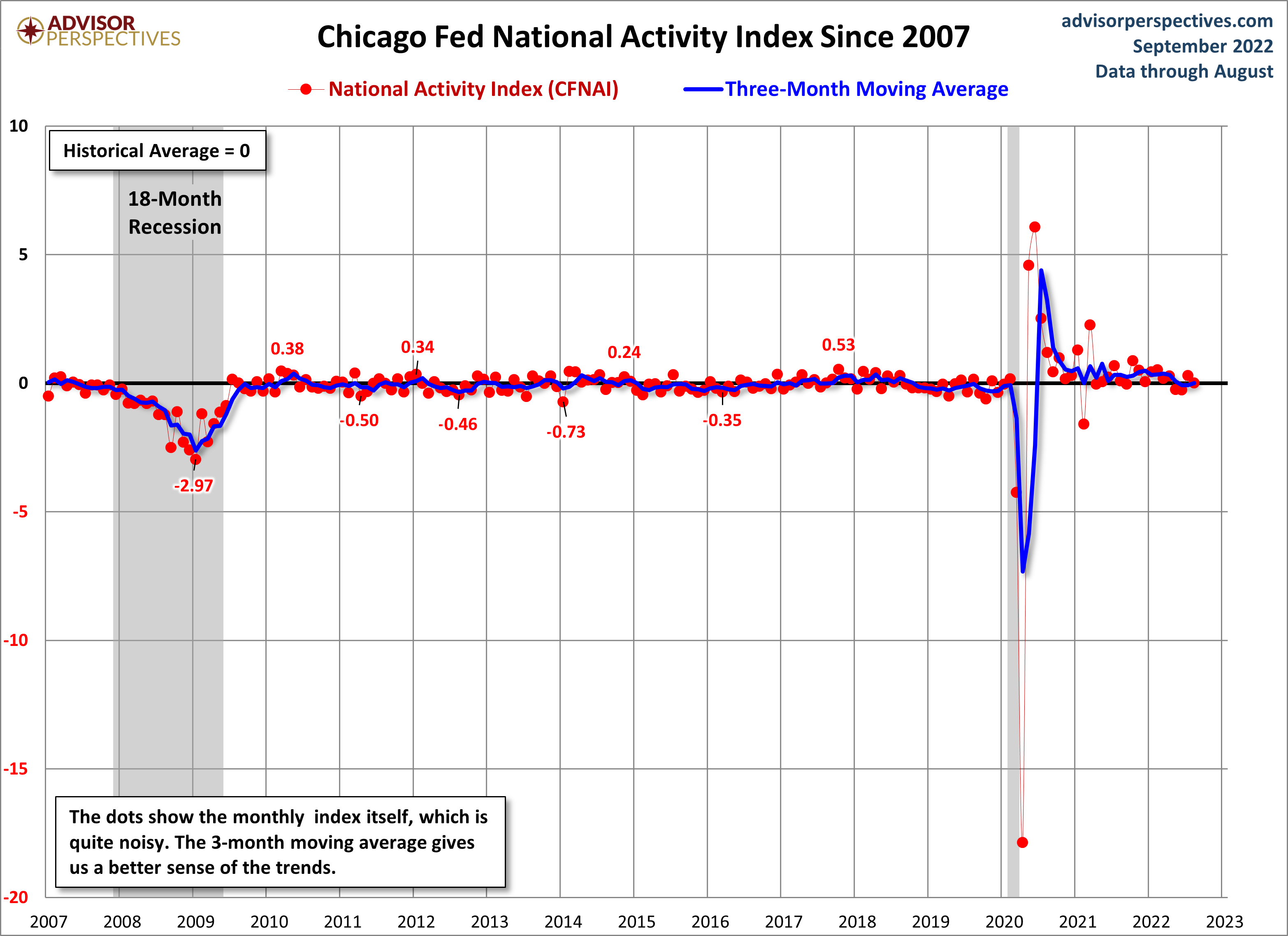
For a broad historical context, here is the complete CFNAI historical series dating from March 1967.
(Click on image to enlarge)
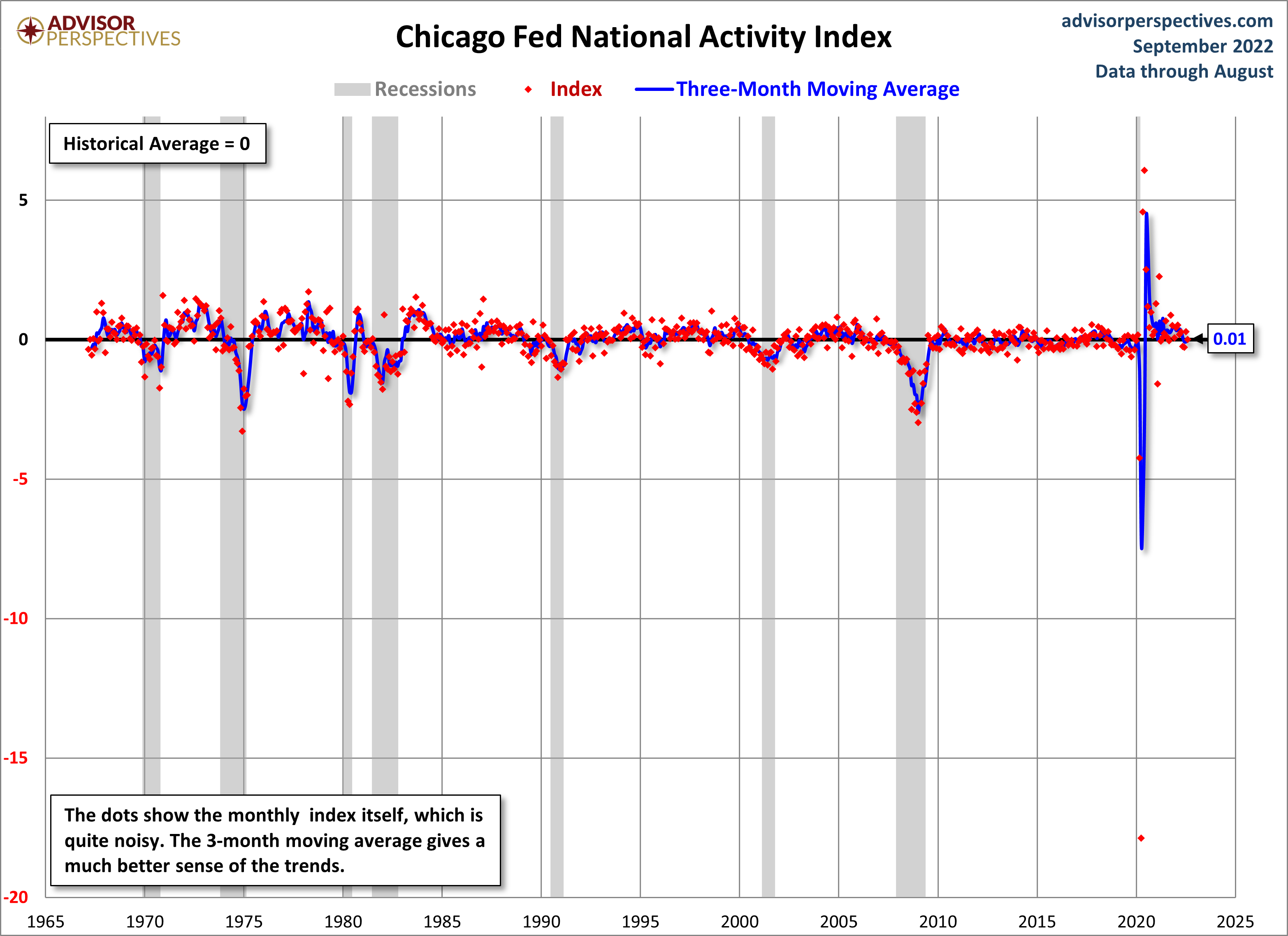
The next chart highlights the -0.7 level. The Chicago Fed explains:
When the CFNAI-MA3 value moves below -0.70 following a period of economic expansion, there is an increasing likelihood that a recession has begun. Conversely, when the CFNAI-MA3 value moves above -0.70 following a period of economic contraction, there is an increasing likelihood that a recession has ended.
(Click on image to enlarge)
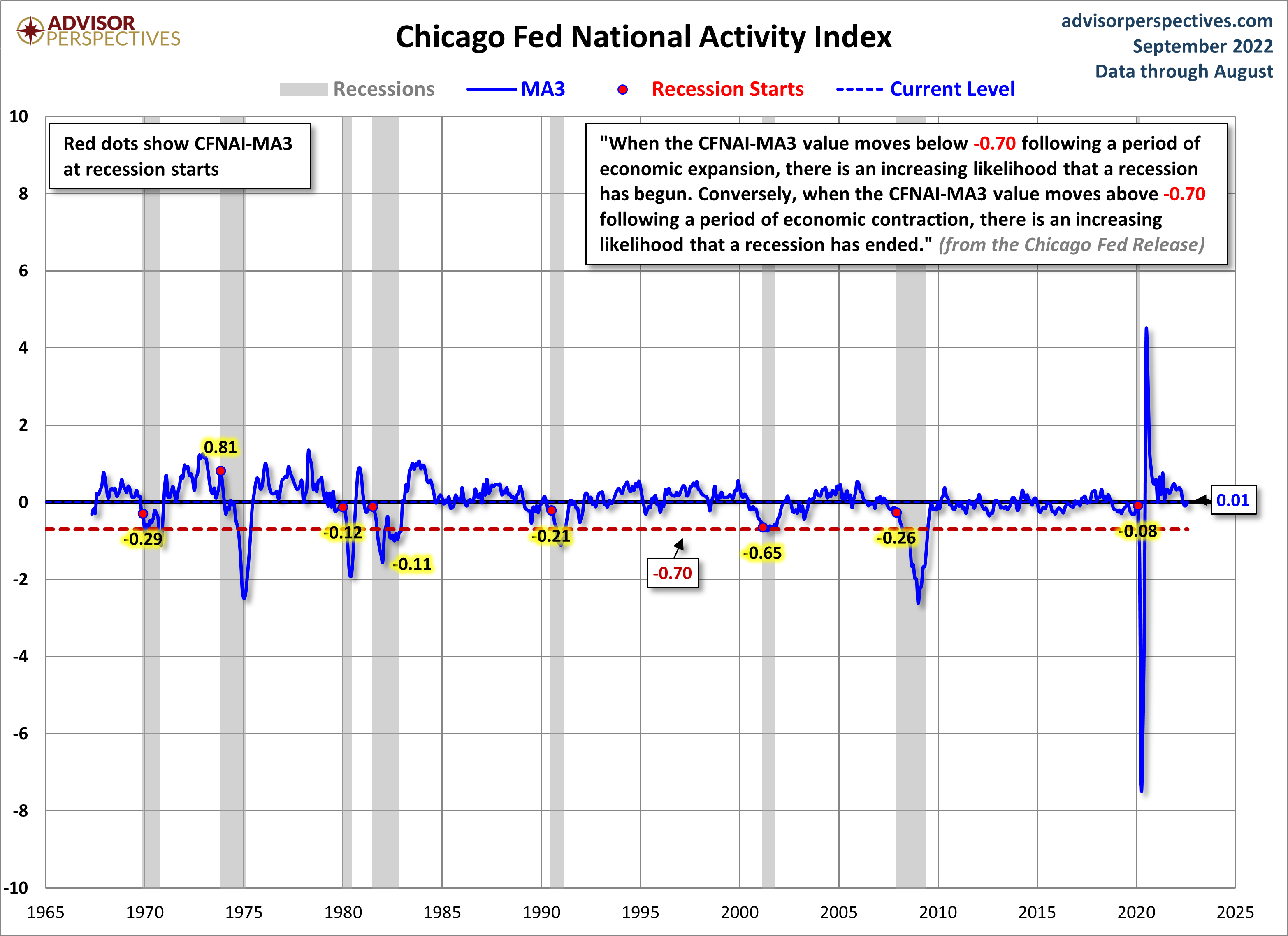
The next chart includes an overlay of GDP, which reinforces the accuracy of the CFNAI as an indicator of coincident economic activity.
(Click on image to enlarge)
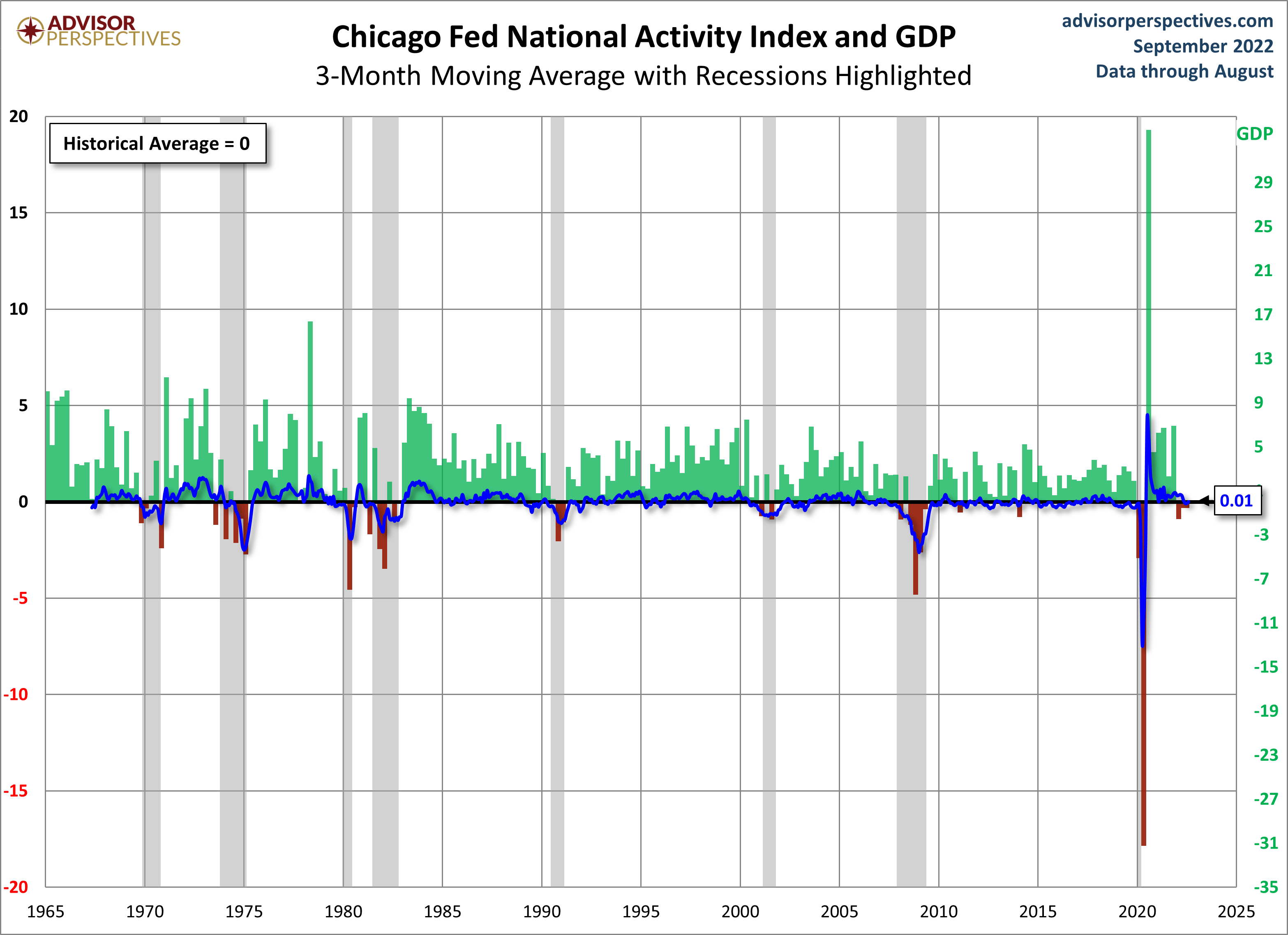
Here's a chart of the CFNAI without the MA3 overlay — for the purpose of highlighting the high inter-month volatility.
(Click on image to enlarge)
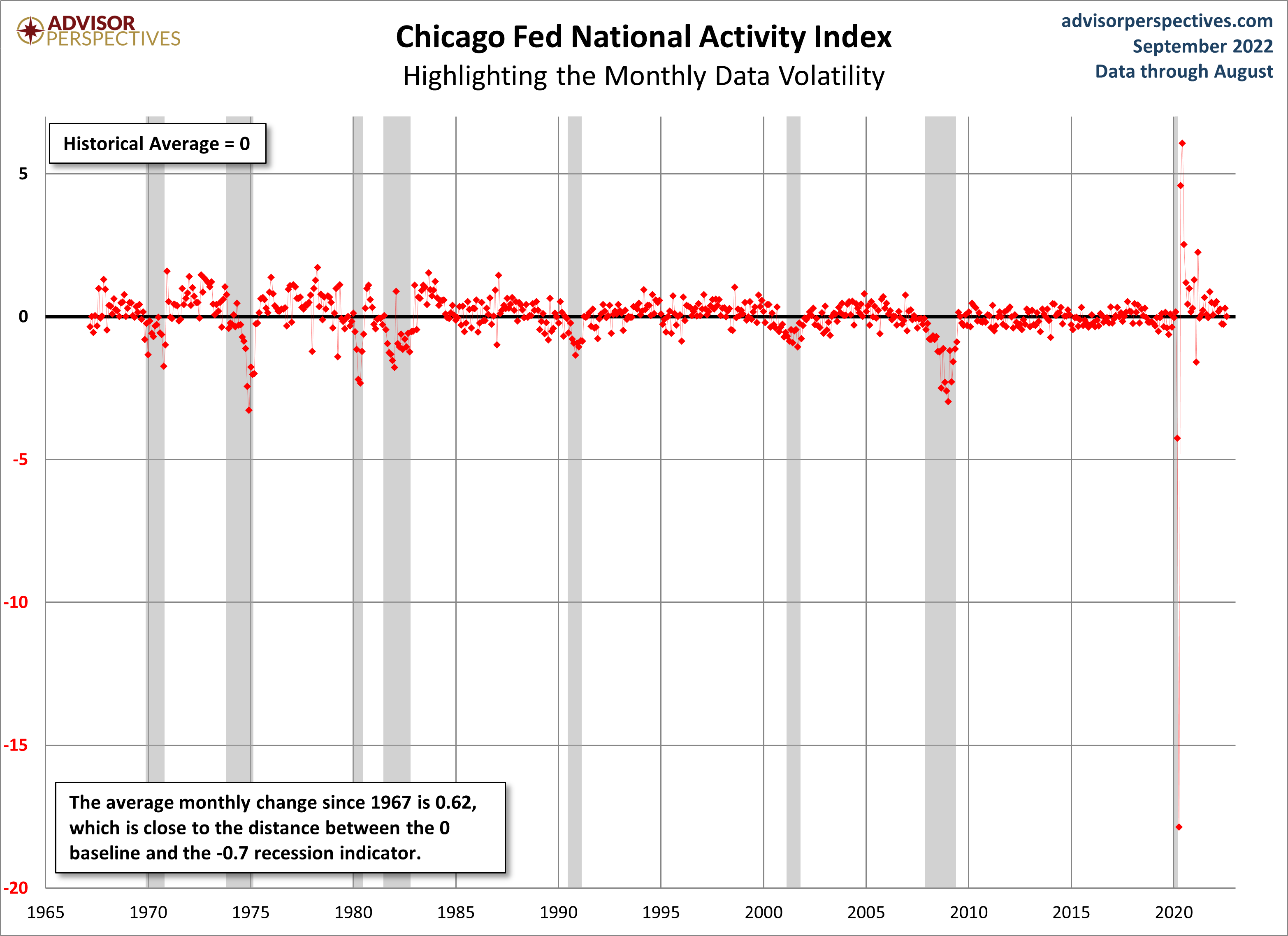
Further underscoring the volatility is the roller-coaster list of CFNAI monthly headlines from the last couple of years.
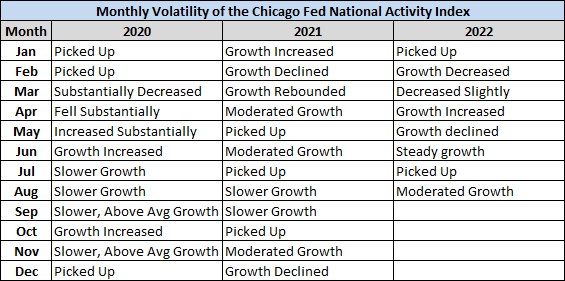
The Long-Term Economic Trend
In the final chart, we've let Excel draw a linear regression through the CFNAI data series. The slope confirms the casual impression of the previous charts that National Activity, as a function of the 85 indicators in the index, has been declining since its inception in the late 1960s, a trend that roughly coincides with the transition from a good-producing to a post-industrial service economy in the information age.
(Click on image to enlarge)
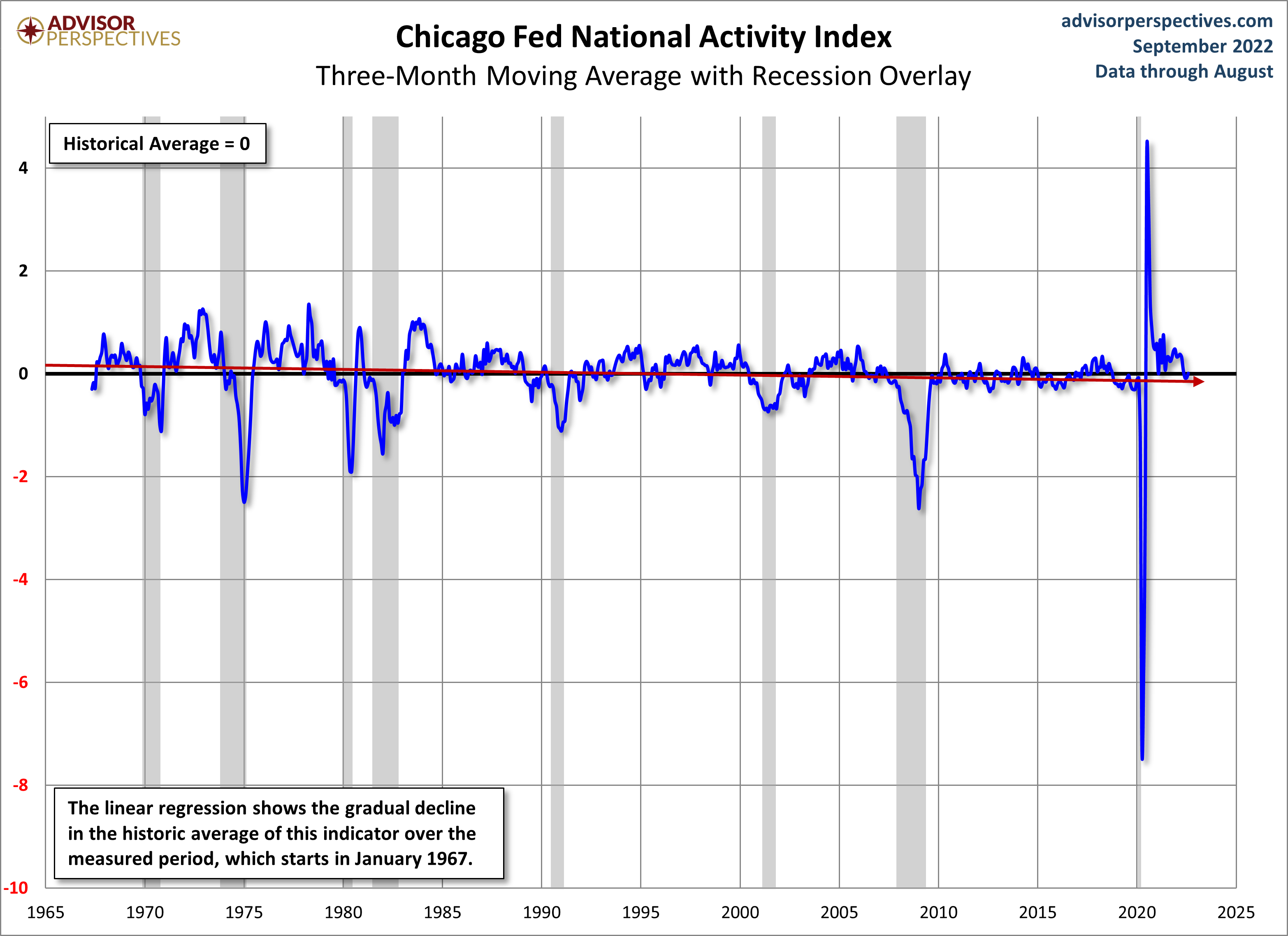
More By This Author:
Dallas Fed Manufacturing Growth Up In September, But Demand Down
Treasury Snapshot: 2-10 Spread at -0.51%
S&P 500 Snapshot: Down 22.5% Year-To-Date



